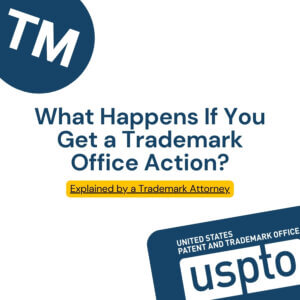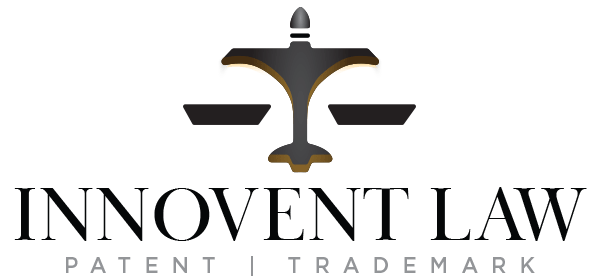Receiving a Trademark Office Action from the USPTO (United States Patent and Trademark Office) can be unsettling, but it’s a common part of the trademark application process.
Whether it’s due to a simple procedural issue or a more complex legal matter, an Office Action is the USPTO’s formal response to your trademark filing. But don’t worry — this isn’t the end of your application. In this blog post, we’ll explore what an Office Action entails, how to respond effectively, and the difference between USPTO fees and legal fees.
What Is a Trademark Office Action?
An Office Action is an official letter from the USPTO that outlines any issues or deficiencies with your trademark application. There are two main types of Office Actions:
- Non-Substantive Office Actions: These are minor issues, often relating to administrative or procedural aspects of your application, such as an incorrect description or a missed signature. These are relatively easy to fix.
- Substantive Office Actions: These are more complex and require a legal response. Issues might include conflicts with existing trademarks, likelihood of confusion, or your mark being deemed descriptive or generic.
In both cases, you typically have six months to respond, but addressing the concerns as quickly as possible is always recommended to keep the process moving forward.

Steps to Responding to an Office Action
- Understand the Reason for the Office Action: Thoroughly review the USPTO Office Action to identify the exact issues. If it’s a non-substantive issue, like an error in classification or a missing signature, it can usually be corrected quickly.
- Consult a Trademark Attorney: If the Office Action is substantive, it’s crucial to consult a trademark attorney. They can help draft a response that addresses the USPTO’s concerns, whether it’s providing evidence of distinctiveness or arguing why your mark should be approved.
- Prepare a Formal Response: With the help of your attorney, submit a detailed response addressing each issue raised in the Office Action. Ensure you meet the six-month deadline, as failing to respond will result in your application being abandoned.
- Await USPTO Review: Once your response is submitted, the USPTO will review your arguments. If they are satisfied, your application will proceed to the next steps, such as publication in the Official Gazette.
Common Reasons for a Trademark Office Action
Several common issues can result in a Trademark Office Action, including:
- Likelihood of Confusion: If your mark is too similar to an existing registered mark, the USPTO may reject your application. You’ll need to prove that consumers won’t confuse the two trademarks.
- Descriptiveness: If your trademark is deemed too descriptive of the goods or services you offer, it may be rejected. You may need to provide evidence showing that the public associates the mark with your brand.
- Specimen Issues: Sometimes, the USPTO requires additional or clearer specimens to show how you are using the mark in commerce.
Understanding the Difference Between Legal Fees and USPTO Fees
When filing a trademark application, you’ll encounter both USPTO fees and legal fees. Here’s a breakdown:
- USPTO Fees: These are the required filing fees paid directly to the United States Patent and Trademark Office. They cover the costs of processing and reviewing your application. USPTO fees vary based on the number of classes you file for and the type of application (e.g., standard or TEAS Plus).
- Legal Fees: These are the costs associated with hiring a trademark attorney to manage your application. Legal fees typically cover services such as trademark searches, responding to Office Actions, and ensuring that your application is legally sound.
While USPTO fees are mandatory, legal fees provide you with the protection and expertise needed to navigate the process successfully. For example, responding to a substantive Office Action often requires legal expertise to avoid rejection.
What If You Don’t Respond to a Trademark Office Action?
Failing to respond to an Office Action within the designated six months will result in the USPTO abandoning your application. This can be a costly setback, as you’ll need to file a new application and pay the USPTO fees again. Additionally, if you delay, someone else could file for a similar mark during that time, potentially blocking your future application.
Legal Fees vs. USPTO Fees: What’s the Difference?
It’s essential to understand the difference between legal fees and USPTO fees when managing your trademark:
- USPTO Fees: These are mandatory payments made to the USPTO to process your trademark application. They range from $250 to $350 per class of goods/services.
- Legal Fees: These are payments to your trademark attorney for services such as filing the application, responding to Office Actions, and representing your interests throughout the trademark process.
Both types of fees are necessary, but they serve different functions. The USPTO fees cover the administrative process, while legal fees ensure you have expert advice to navigate potential legal pitfalls.
How to Avoid Receiving an Office Action in the Future
To reduce the risk of receiving an Office Action in the future, follow these best practices:
- Conduct a Thorough Trademark Search: Before filing your application, perform a comprehensive search to ensure your trademark doesn’t conflict with existing marks. Your trademark attorney can help with this.
- Choose a Distinctive Mark: Avoid using descriptive or generic terms. The more unique and distinctive your trademark, the better your chances of approval.
- Submit Clear and Accurate Specimens: Ensure that the specimens you submit clearly show how the mark is being used in commerce. Include all required information and make sure it’s correct.
Why You Should Work with a Trademark Attorney
Responding to an Office Action is critical to securing your trademark registration. With the guidance of a trademark attorney, you can effectively navigate the complexities of the USPTO process, protect your brand, and avoid costly delays.
At Innovent Law, we specialize in helping clients respond to USPTO Office Actions and securing trademarks. If you’ve received an Office Action, contact us today for expert assistance.
Bonus Section: Legal Fees vs. USPTO Fees—What’s the Difference?
When managing a trademark application, understanding the financial obligations is essential. The key distinction is that USPTO fees are mandatory costs paid directly to the USPTO, while legal fees cover your attorney’s expertise in guiding your application. Both are critical to securing a strong, enforceable trademark.
